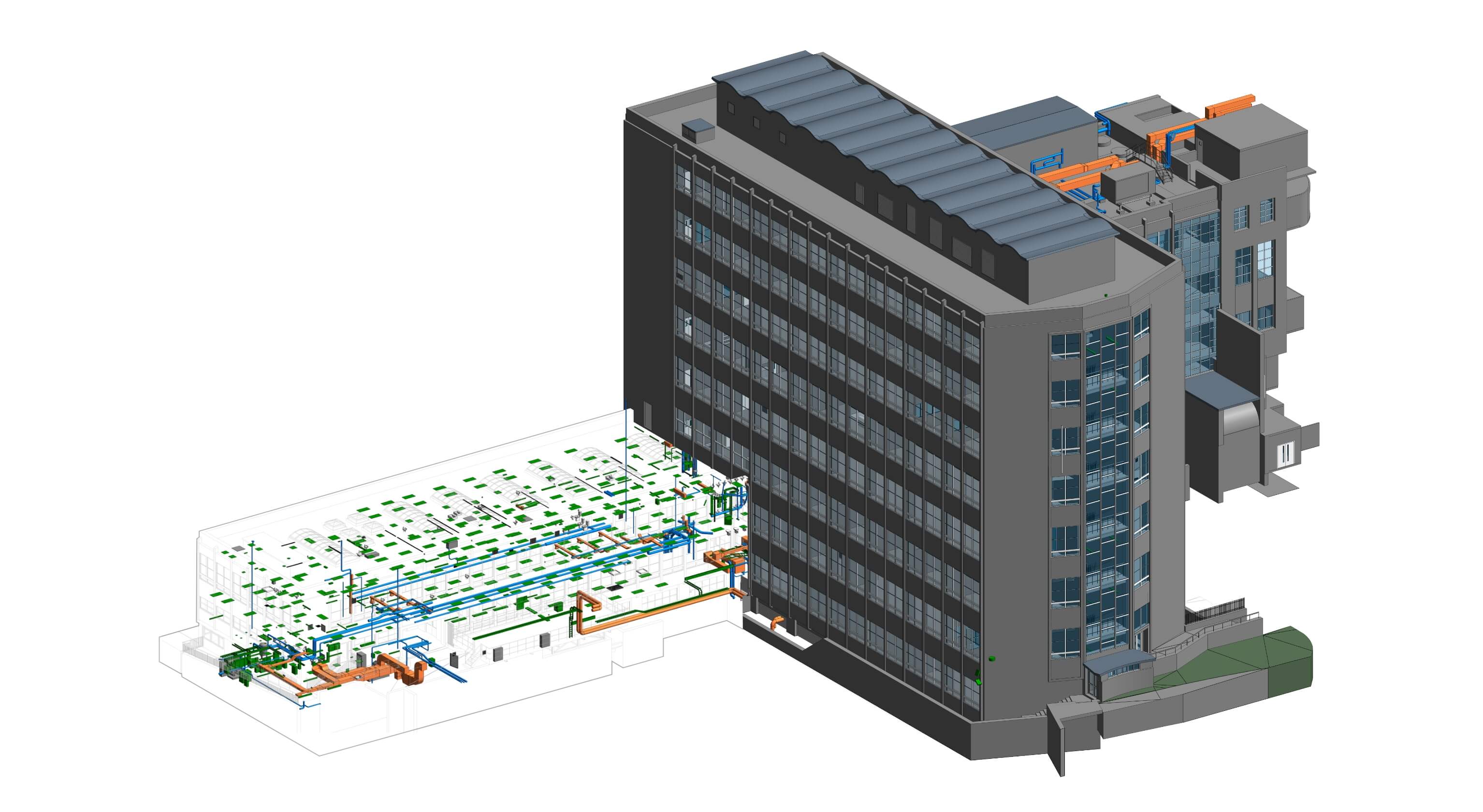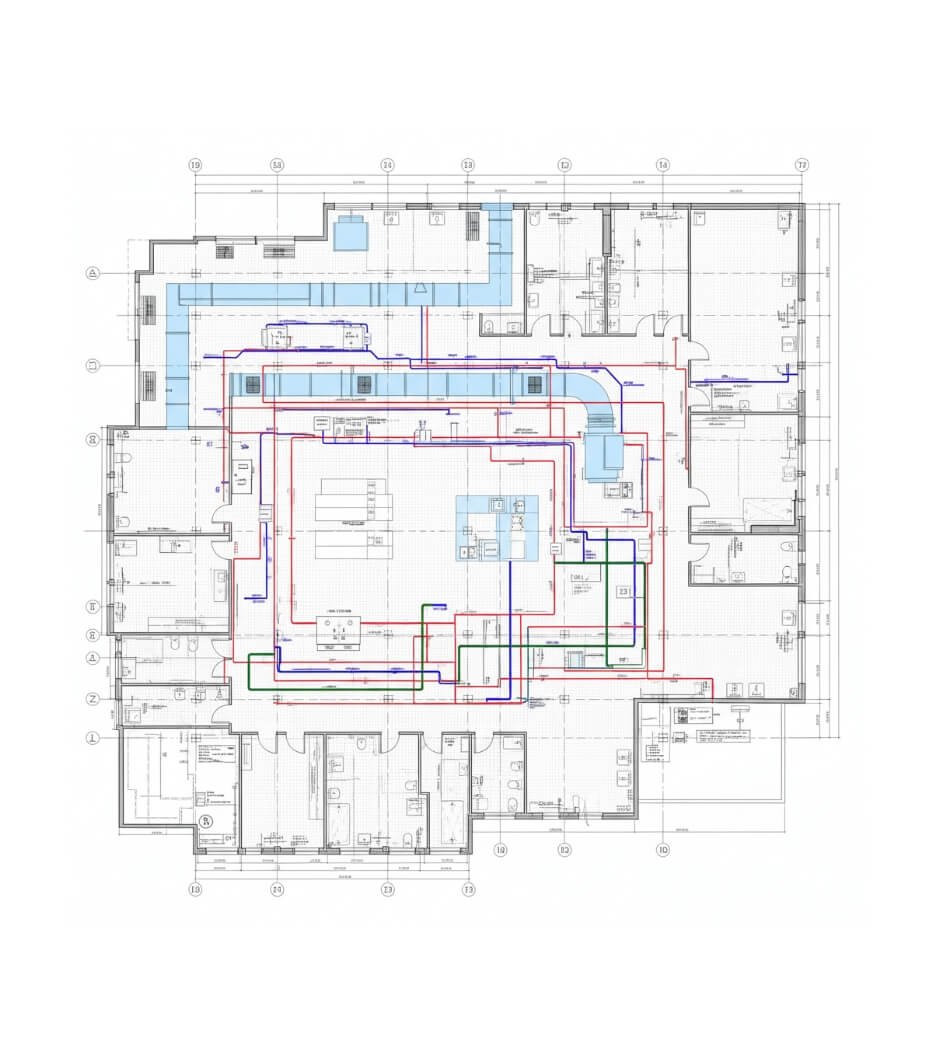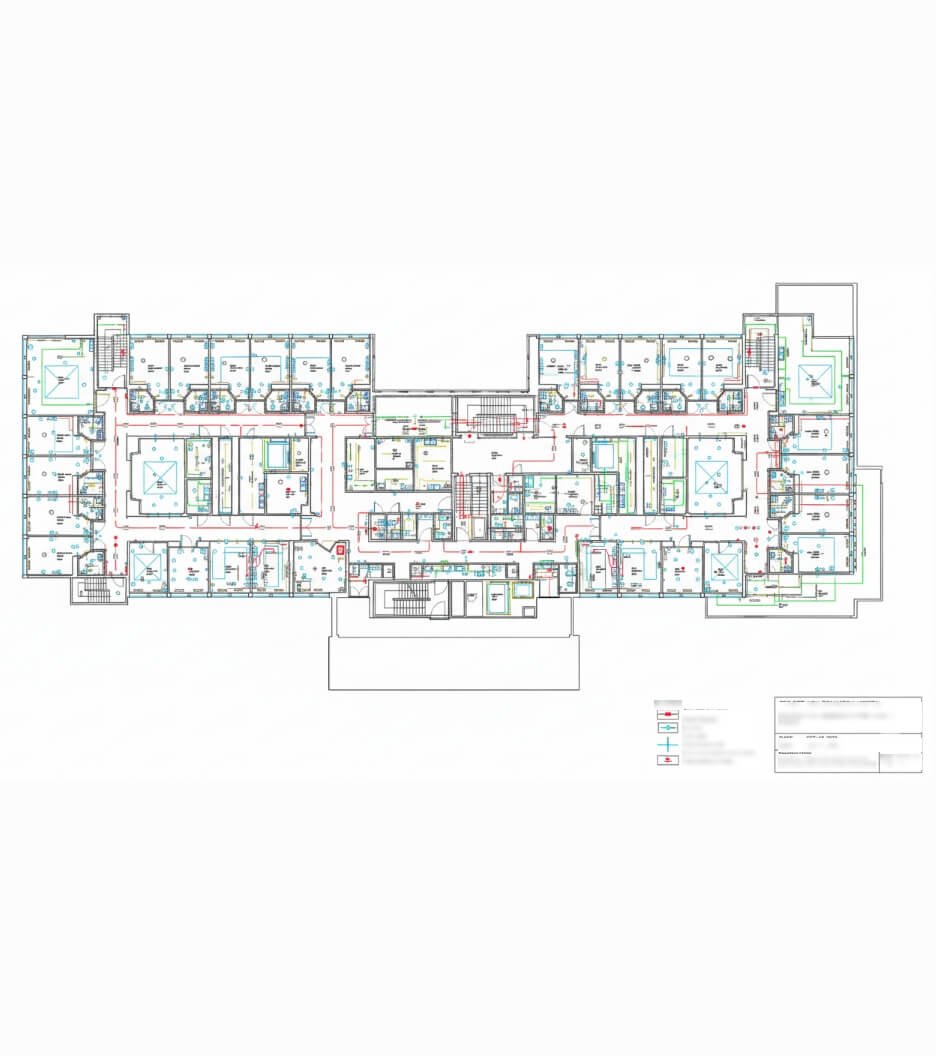 Rahul Dogra
Rahul Dogra
Digital Twins and MEP BIM: What the AEC Industry Should Expect
 Rahul Dogra
Rahul Dogra

Send Us Your Requirement
The architecture and construction sector evolves rapidly, considering the pace of technological emergence and innovations. Today, in the modern architectural landscape, adapting to innovation is not just a luxury but has become a necessity to achieve the desired goals and offer the best infrastructure. Moreover, precision, efficiency, and reliability have been constantly strong pillars of the AEC project’s success. Emerging technologies and innovation not only ensure enhanced precision but also bring advanced solutions for complex projects.
Over the years, AEC has witnessed a wave of transformation that includes many technologies. Among several, one of the beneficial technologies is building information modeling services, which allow AEC professionals to enhance collaboration, communication, design precision, cost efficiency, and more. As technology advances over time, digital twins have become a trend in the architecture and construction realm.
Today, digital twins in construction have become a significant aspect, offering a wide range of benefits that redefine building performance, minimize the scope of errors and more. In the architecture and construction field, infrastructure project construction is segmented into various stages, and each stage requires meticulous attention to detail. Architectural, structural, MEP, interior and exterior visualization, lifecycle management, and other aspects demand efficiency to maintain quality and harm. MEP is one of the complex aspects in every construction project, requiring MEP components to integrate harmoniously into the design.
Maintaining harmony and synchronization between all the components ensures a comfortable living environment. From mechanical systems to plumbing systems to fire safety, every component must fit properly into the design. Due to the complex and intricate process, MEP BIM services play a significant role. MEP is a vital aspect of making the infrastructure functional, and with the integration of BIM, AEC professionals can easily integrate components in the design without compromising the design.
Moreover, the BIM model ensures precision, fewer errors, reduced rework, and more. As crucial as MEP BIM modeling and advancing technology are to the current approach, MEP BIM-enabled digital twins help enhance the complex process and bring more comprehensive solutions. Let’s understand digital twin and MEP modeling services in detail and how technology can enhance the process.
Integrate Digital Twin in MEP BIM for Optimized Performance
Talk to Us
Understanding Digital Twin in Detail
In the rapidly evolving realm of AEC, technologies continually enhance existing processes, resulting in increased precision and quality. As traditional methods have become outdated, digital processes have led to more accurate, efficient, and cost-saving approaches. Thanks to BIM modeling services, it has allowed architects, engineers, and other professionals to work collaboratively and reduce significant time. In fact, BIM also helps simplify complex designs, leading to precision and high-quality project outcomes. Building information modeling (BIM) represents a technological transformation as the AEC landscape continues to scale up, and the future of BIM in AEC presents wider opportunities.
Digital twin technology is a game changer in the architecture and construction realm, offering innovative, faster, and data-driven solutions. As BIM is a digital representation of an infrastructure project’s physical and functional characteristics, a digital twin is a virtual replica of a building. Leveraging the power of AEC digital transformation and adopting digital twins allows for hands-on, real-time monitoring, simulation, and optimization. A digital twin in AEC is defined as a virtual replica of a physical building, offering real-time data integration and predictive simulations. As a matter of fact, digital twin technology integrates with significant components, such as
- Building information modeling
- IoT sensors
- Data integration and ML
- VR environment
- AI algorithms
Digital twin innovation specifically enhances decision-making through the construction process. 3D BIM replicas are created of the physical environment and processes to enhance the project design. AEC firms leverage the power of digital twins to reduce significant errors, improve safety, and accelerate the complex process. Apart from replicating the construction project, the following are some of the significant advantages;
- System optimization
- Improved decision making
- Predictive maintenance
- Enhanced collaboration
- Optimizing facility management
With the benefits above, the AEC industry has gradually adopted digital twin technology. As it delivers enhanced results and accelerates the construction process, digital twin BIM services enable better decision-making, improved lifecycle management, enhanced MEP BIM capabilities, and more. Discover how digital twin technology in MEP BIM transforms the approach. Foremost, let’s briefly understand MEP modelling services.
What is MEP BIM in AEC Firms?
In the modern era of architecture and construction, building information modeling has reshaped the approach for architects, engineers, designers, and other professionals. It has provided a digital representation of the infrastructure, bringing efficiency in design, precision, and minimizing errors. In any construction project, MEP components play a crucial role in making the building functional and comfortable for its occupants. Integrated with BIM services, MEP components are accurately designed, planned, managed, and integrated into the model, ensuring quality is not compromised.
Designing MEP components is a complex task as it demands synchronization between the three. Each of the components plays a crucial role in ensuring the infrastructure’s functionality, making it comfortable for occupants to live in. MEP BIM services play a significant role in the construction process, enabling professionals to improve coordination, enhance precision, maintain harmony among the three components, and more. As a matter of fact, MEP BIM integration leads to lesser error, comfort, and safety in the infrastructure.
From well-functioning HVAC systems to evenly distributed power throughout the building, MEP plays a crucial role. The integration of BIM enables AEC professionals to seamlessly integrate MEP components into the design, ensuring maximum harmony and minimizing errors or clashes. The following are some of the key benefits of MEP modeling services.
MEP BIM Services Major Advantages
Efficient resource management
Better collaboration and coordination
Faster project delivery
Quick clash detection
Enhanced design accuracy
Improved visualization
Reduced rework
Better resource utilization
With better planning, coordination, and lifecycle management, MEP BIM provides a comprehensive digital representation that offers precision throughout the process and during onsite construction for MEP engineers. Moreover, data-rich, intelligent 3D models also aid in data analysis, helping to identify clashes or conflicts during the design process and providing accurate solutions. This helps to reduce cost, rework, and time during the complex design process.
As technology has evolved and made a significant impact on the architecture and construction realm, digital twins have benefited the MEP BIM process, making it a more advanced and holistic approach. MEP BIM has already transformed the approach; however, having real-time data in construction can yield more comprehensive results in less time while enhancing accuracy, efficiency, and optimized building performance. Discover how MEP BIM-enabled digital twins can be a useful strategy in the construction industry.
Role of Digital Twins in MEP BIM Service
As briefly discussed, digital and MEP BIM each bring holistic solutions through technology advancements. In the modern architecture and construction process, complex designs with intricate details have become quite common. While innovation and technology in the sector have transformed the working approach, Industry 4.0 demands more enhanced and exclusive results; integrating digital twin technology is a fruitful approach. In fact, MEP is a complex process that requires precise, efficient, and streamlined outcomes to ensure significant harmony between all functional elements. The better the harmony, the more safety in the building.
Considering the crucial nature, the digital twin enables work with real-time data analysis, an interactive platform for visualization, simulation, optimization, and predictive maintenance, all without the need for physical presence on the construction site. This has been a game changer in the architecture and construction sector, simplifying complex processes with real-time monitoring data to ensure utmost precision.
Technology and emerging innovations in the MEP BIM approach redefine building performance, longevity, enhanced safety, and onsite efficiency without any major clashes. Above all; the digital twin plays a significant role in MEP BIM services in various ways. The following are;
Digital Twin Significance in MEP BIM
Improved design accuracy with BIM integration
Energy Optimization and Sustainability
Predictive maintenance
Enhanced facility management
Improved construction and installation
- Improved design accuracy with BIM integration: In the AEC landscape, digital twins are often created through a 3D BIM model framework, representing the replica. As building information modeling is initially utilized in a static format for design phases, digital twins offer real-time performance analysis along with other key aspects, such as environmental conditions, current state, data usage, and more. This is specifically useful for MEP engineers and experts to develop precise simulations and identify clashes or conflicts before the groundwork begins.
- Predictive maintenance: Plays a significant role in the MEP BIM approach. IoT sensors integrated into HVAC, wiring, or plumbing systems offer accurate, live data into the digital model. This enables MEP engineers and other professionals to predict system failures, conduct thorough diagnostics, prevent breakdowns, and more effectively manage their systems. Smart building design with a digital twin helps AEC professionals save costs and leads to enhanced equipment functionality and lifecycle management.
- Energy Optimization and Sustainability: In the ever-growing sector of architecture, energy-saving and sustainable building design have become the norm, considering the increasing environmental impact. With the help of digital twins, engineers can track energy consumption throughout the infrastructure, analyze data, and identify inefficient systems that fail to align with energy efficiency goals. In fact, it also helps to accelerate the process of obtaining a LEED certificate standard, with precise data available on reductions in carbon footprint and more.
- Enhanced facility management: Once the construction is completed, it is evident that facility management needs to be enhanced. Regularly checking the functionality of infrastructure provides valuable insights into maintenance or required renovations. However, the digital twin plays a vital role in offering real-time insights into building operations. From real-time monitoring to air quality to temperature regulation, digital twins bring detailed insights. This helps facility managers coordinate with MEP engineers in case of irregularities or inefficiencies in the building.
- Improved construction and installation: Digital twin technology for MEP BIM helps professionals streamline the process and installation process of the components. Due to fostering enhanced coordination between MEP components, it enables professionals and engineers to communicate effectively. Moreover, it allows the tracking of materials and resources, resulting in reducing waste and ensuring the timely delivery of the project while maintaining synchronization.
These are major areas where digital twin-integrated MEP modelling services play a key role. Above all, BIM technology focuses on design, while the digital twin extends beyond the concept to offer real-time data analysis and monitoring. The benefit of tracking live feeds has been helpful to MEP engineers in ensuring precision and efficiency in complex processes, thereby maintaining harmony. The following are some of the benefits of digital twins in MEP BIM.
- Better facility management
- Informed decision making
- Improved collaboration and communication
- Reduced cost
- Enhanced system performance
As a powerful tool on the AEC horizon, it requires meticulous attention to detail, expertise, skills, software use, and more. In today’s evolving era, AEC firms seek innovative ways to achieve high-quality outcomes while reducing costs. This is where outsourcing MEP BIM integration with digital twin technology is beneficial. Partnering with the right BIM consulting firms, AEC professionals can have hands-on, accurate models with real-time data available. Understand in detail how outsourcing can be helpful.
Outsourcing MEP BIM Services with Digital Twin Integration
In the modern era, architecture firms seek precise and fruitful ways to achieve hands-on, desirable results. As the market is dynamic due to the rise in technologies, there is a lack of expertise to hire. Therefore, outsourcing is one of the appropriate ways to streamline operations and achieve hands-on, accurate results. MEP BIM, with digital twin technology, demands skills, knowledge, attention to detail, and more, leveraging cutting-edge technology to elevate overall results. In fact, outsourcing is a cost-effective way for AEC firms to focus on their primary business goals. Hiring an outsourcing service provider offers a multitude of benefits to the firm, including cost efficiency and consistent customer support.
UniquesCADD is a renowned and top outsourcing provider of MEP BIM services with significant experience and a team of professionals. Harnessing the power of the latest technology and adapting to new methods and approaches, UniquesCADD ensures accurate and desirable outcomes. The following are key benefits of partnering with UniquesCADD;
- Cost efficiency
- Dedicated team
- Quick project delivery
- Transparent pricing
- Access to experts and technology
In a Nutshell
Digital twin technology is a powerful tool in the architecture and construction sector. From accurate MEP component live data feeds to streamlining the groundwork efficiently, digital twins work wonders for MEP BIM services.


